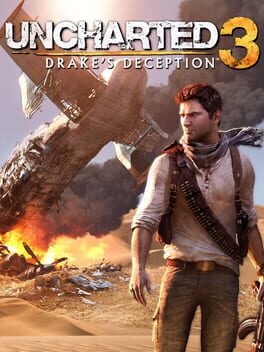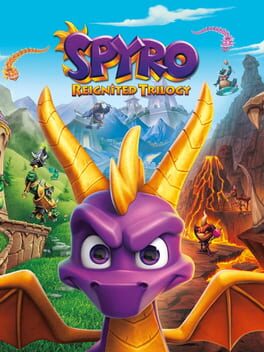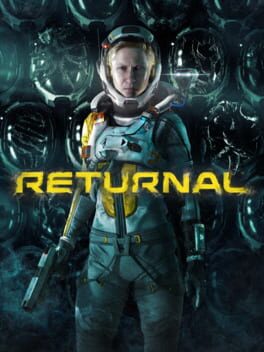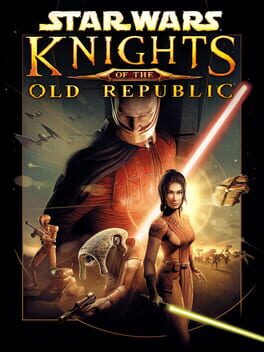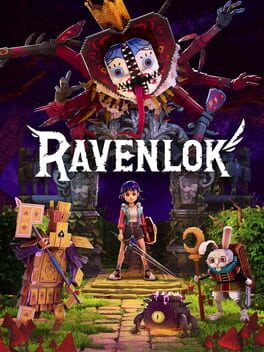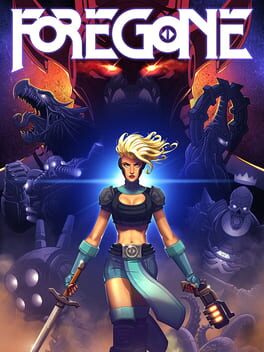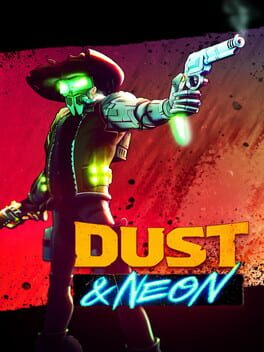Mike_Kersh
Bio
I am incapable of playing one game at a time - so instead I play seven. Setting the goal to write about every game I beat this year. Let’s do this.
I am incapable of playing one game at a time - so instead I play seven. Setting the goal to write about every game I beat this year. Let’s do this.
Badges

GOTY '23
Participated in the 2023 Game of the Year Event
Favorite Games
014
Total Games Played
003
Played in 2024
006
Games Backloggd
Recently Played See More
Recently Reviewed See More
TL;DR - PowerWash Simulator is a relaxing, “head-empty”, simulator with good progression, well designed controls, and a surprisingly deep campaign. Unfortunately, frequent crashes were frustrating and hampered my enjoyment of its satisfying loop.
I’m not exactly an avid job simulator player. A few have caught my eye, but a lot of them seem poorly designed, with bare-bones systems and minimal effort put into their creation. Still, there is a certain lizard brain itch that these types of games scratch for me. Simulators that take menial labor and the sweet satisfaction of a job well done and gameify them tickle my most basic instincts. Hardspace: Shipbreaker is one of those games; an excellent twist on the genre where you play as a spaceship salvager meticulously carving and separating the valuable and invaluable parts of old spacecraft in service of the megacorporation that owns you. It kind of reminded me of working at car dealerships as a detailer and shopkeep during college. There’s just something about throwing some headphones on, flipping to your favorite podcast, putting your head down to get to work, and then turning around and admiring all you accomplished.
PowerWash Simulator, thankfully, has more in common with the quality of Hardspace than some of the other job simulators. As a nameless power washer, you’ll work your way through about 40 levels offering a diverse number of different environments and vehicles to clean with your water gun, and all of it is enjoyable. I was genuinely surprised by how deep and varied the campaign is. I found myself cleaning all sorts of things, from bicycles and vans, to haunted houses and ancient statues. The absurdity of some of the jobs you’re tasked with completing are amusing and keep the game from feeling too repetitive. A rewarding but simple progression system helps keep you moving as well. The money you earn from your washes can be used to buy more powerful guns, nozzles with different ranges, fast-cleaning soap, and even some snazzy new suits and skins. The quest to become a more efficient cleaner passes directly through these upgrades, and the improvements feel well worth their in-game price.
The loop is quite simple. You’ll select a level, be dropped in, and must clean off every speck of dirt in sight. It requires patience and precision control if you want to be effective, and I could see some people getting frustrated at the pace of the game. But, if you are willing to let yourself be absorbed into the task, I think you’ll find the experience to be relaxing and meditative. If you’d like to speed up the process or the task seems too daunting, you can spend a modest amount of your hard-earned dollars on soaps which can be used to dissolve the grime before your eyes, and decrease the amount of time you have to spend on any individual section. Speaking of sections, the game smartly divides its levels and vehicles into smaller pieces that make the tasks much easier to tackle. Whenever you complete a section, a very satisfying chime will let you know, and I found myself chasing that sound like a puppy learning a new trick in exchange for a tasty treat. I do wish that the progress tracking on individual segments was more uniform across the game though. I encountered some walls or sinks that appeared completely spotless after a thorough searching, but still weren’t marked complete, and it took me spraying randomly across their surfaces to finally trigger the completion. On other objects, plenty of dirt could still be seen before the chime would sound, and this inconsistency grew increasingly tiring as I spent more time with the game.
As a whole, PowerWash Simulator is a beautifully mind-numbing experience. This isn’t a game you have to try very hard at. There aren’t complex puzzles to solve or difficult boss encounters to defeat. You just clean, and clean, and clean. It’s the kind of game I’d consider when I want to play something, but would rather not deal with the overstimulation or complex systems of a more traditional video game experience. But there is one specific problem that compromised my whole experience: crashes. I’m not sure if it’s an issue specific to my console, or if PowerWash Simulator is poorly optimized for PS5, but I experienced a dozen or so crashes throughout my 35 hours of playtime, and my patience ran so thin that I put the game down for days at a time. I’m not sure if FuturLab has any more updates planned for the game, but a few performance patches for PS5 wouldn’t do them any harm.
If you need a relaxing game to pass the time, but get turned off by the slower-paced and poorly designed job simulators that are currently out there, I think PowerWash Simulator is the one you should try. It’s simple, it’s charming, and it’s fun. There’s enough of a game here to keep your brain engaged but not so much that requires a lot of effort or attention from you. A deep campaign and rewarding progression system are welcome features that invite you to play more. Before I end, I also have to shout out PowerWash Simulator’s ending cutscene and credits. The montage is accompanied by a bright and catchy tune and the credits include short videos of every cleaning job performed throughout your campaign. A beautiful reminder that looking back at a job well done is a reward in and of itself. The PS5 version’s performance is an unfortunate stain on an otherwise squeaky clean experience, but a little dirt isn’t enough to keep me from inviting everyone to give this addictive simulator a go.
I’m not exactly an avid job simulator player. A few have caught my eye, but a lot of them seem poorly designed, with bare-bones systems and minimal effort put into their creation. Still, there is a certain lizard brain itch that these types of games scratch for me. Simulators that take menial labor and the sweet satisfaction of a job well done and gameify them tickle my most basic instincts. Hardspace: Shipbreaker is one of those games; an excellent twist on the genre where you play as a spaceship salvager meticulously carving and separating the valuable and invaluable parts of old spacecraft in service of the megacorporation that owns you. It kind of reminded me of working at car dealerships as a detailer and shopkeep during college. There’s just something about throwing some headphones on, flipping to your favorite podcast, putting your head down to get to work, and then turning around and admiring all you accomplished.
PowerWash Simulator, thankfully, has more in common with the quality of Hardspace than some of the other job simulators. As a nameless power washer, you’ll work your way through about 40 levels offering a diverse number of different environments and vehicles to clean with your water gun, and all of it is enjoyable. I was genuinely surprised by how deep and varied the campaign is. I found myself cleaning all sorts of things, from bicycles and vans, to haunted houses and ancient statues. The absurdity of some of the jobs you’re tasked with completing are amusing and keep the game from feeling too repetitive. A rewarding but simple progression system helps keep you moving as well. The money you earn from your washes can be used to buy more powerful guns, nozzles with different ranges, fast-cleaning soap, and even some snazzy new suits and skins. The quest to become a more efficient cleaner passes directly through these upgrades, and the improvements feel well worth their in-game price.
The loop is quite simple. You’ll select a level, be dropped in, and must clean off every speck of dirt in sight. It requires patience and precision control if you want to be effective, and I could see some people getting frustrated at the pace of the game. But, if you are willing to let yourself be absorbed into the task, I think you’ll find the experience to be relaxing and meditative. If you’d like to speed up the process or the task seems too daunting, you can spend a modest amount of your hard-earned dollars on soaps which can be used to dissolve the grime before your eyes, and decrease the amount of time you have to spend on any individual section. Speaking of sections, the game smartly divides its levels and vehicles into smaller pieces that make the tasks much easier to tackle. Whenever you complete a section, a very satisfying chime will let you know, and I found myself chasing that sound like a puppy learning a new trick in exchange for a tasty treat. I do wish that the progress tracking on individual segments was more uniform across the game though. I encountered some walls or sinks that appeared completely spotless after a thorough searching, but still weren’t marked complete, and it took me spraying randomly across their surfaces to finally trigger the completion. On other objects, plenty of dirt could still be seen before the chime would sound, and this inconsistency grew increasingly tiring as I spent more time with the game.
As a whole, PowerWash Simulator is a beautifully mind-numbing experience. This isn’t a game you have to try very hard at. There aren’t complex puzzles to solve or difficult boss encounters to defeat. You just clean, and clean, and clean. It’s the kind of game I’d consider when I want to play something, but would rather not deal with the overstimulation or complex systems of a more traditional video game experience. But there is one specific problem that compromised my whole experience: crashes. I’m not sure if it’s an issue specific to my console, or if PowerWash Simulator is poorly optimized for PS5, but I experienced a dozen or so crashes throughout my 35 hours of playtime, and my patience ran so thin that I put the game down for days at a time. I’m not sure if FuturLab has any more updates planned for the game, but a few performance patches for PS5 wouldn’t do them any harm.
If you need a relaxing game to pass the time, but get turned off by the slower-paced and poorly designed job simulators that are currently out there, I think PowerWash Simulator is the one you should try. It’s simple, it’s charming, and it’s fun. There’s enough of a game here to keep your brain engaged but not so much that requires a lot of effort or attention from you. A deep campaign and rewarding progression system are welcome features that invite you to play more. Before I end, I also have to shout out PowerWash Simulator’s ending cutscene and credits. The montage is accompanied by a bright and catchy tune and the credits include short videos of every cleaning job performed throughout your campaign. A beautiful reminder that looking back at a job well done is a reward in and of itself. The PS5 version’s performance is an unfortunate stain on an otherwise squeaky clean experience, but a little dirt isn’t enough to keep me from inviting everyone to give this addictive simulator a go.
TL;DR - Ravenlok is a 3D action-adventure game that throws back to a simpler time. It’s charming style and simple gameplay mechanics make it an awesome introduction point for those who are new to video games.
One of my earliest gaming memories is with Spyro the Dragon on the PlayStation. My childhood was filled with hundreds of hours of adventure with the snarky purple dragon and his dragonfly companion. I was around 5 years old at the time and 3D gaming was still relatively new, and I had VERY limited prior experience with 2D video games, much less the vast three-dimensional world of the Dragon Kingdom I was about to be thrust into. As a result, I ended up wandering around a lot. I was having the time of my life as a little kid to be sure; but I was barely able to read at that age and trying to figure out where to go next or how to do a basic task was a bit of a reach for me. My mother, bless her heart, borrowed a strategy guide from a cousin and would sit with me and read through the guide, helping me figure stuff out and progress through the different levels. At one point I came upon a staircase with a series of magical armor sets that would come alive as you got too close and they couldn’t be destroyed through Spyro’s typical headbutt or flame breath. Our strategy guide told us that we’d have to run past them as fast as we could before they became alive. To be honest, I’m not sure if I tried it 100 times, a couple times, or if I simply viewed the task to be too large a task for my little hands to overcome. I do know that I ended up in my mom’s arms bawling my eyes out because I didn’t think I could do it. Eventually I did it, and I would become so good at Spyro and its sequels that playing through them became trivial.
Ravenlok is a game that made me think about Spyro. The games aren’t very similar. Spyro is a platforming focused adventure game and Ravenlok doesn’t even have a jump button; but Ravenlok had me reflecting on the games I played when I was little. Its presentation feels pulled straight from the PS1 and PS2 days, its story and world evoke childhood fairy tales like Alice in Wonderland or Spirited Away, and I couldn’t help but feel that this game wasn’t meant for me. In fact, Ravenlok feels like it was a game made for someone who has never played a game before; and that’s why it made me think of Spyro. I wonder, had this game come out in 1999 and little 5-year-old me had played it first, if maybe I wouldn’t have shed so many tears when I had to run past all those suits of armor in Spyro.
In Ravenlok you play as a young girl who has just moved with her family out to a countryside home they inherited from a deceased family member. After helping your mom and dad unpack a few things, you wander over to the old barn to have a look around and are pulled through a mirror into the magical land of Dunia. You’ll instantly notice the inspirations pulled from the Alice in Wonderland fairytale. There’s a white rabbit, an evil queen, enemies made of cards, and even a boss encounter with Tweedledee and Tweedledum. You are revealed to be the prophesied hero that is meant to liberate Dunia from the oppression of the evil queen, and your quest begins.
The other thing that will quickly pop out to you is Ravenlok’s visual style. The game uses a 3D pixelated art style that is quite unique. The characters and environments all avoid looking blocky or chunky and instead the visual choices all add to the storybook aesthetic. Colors, enemy designs, and environments all pop, and each section you progress through has its own distinct mood - from dark mushroom forests to grand, imposing theaters. The friendly creatures you meet along your journey all add to the experience as well with their own exaggerated and fantastical designs. The music is also really well done, with strong themes and catchy melodies that never got old in my playthrough.
Perhaps the weakest part of Ravenlok’s experience is its combat. You have an attack button, a block button, a dash, and each of the four shoulder buttons/triggers is assigned a special attack. The attack is fast and the animation is repetitive, and fights ultimately boiled down to me mashing the attack button while I waited for the next special attack to cool down for another use. Ravenlok’s journey doesn’t include any platforming, and while its adventure game elements of tracking down the right item to progress the story are fun to puzzle through, this leaves the combat feeling like it could use a bit more variety. So, it’s not especially deep; but I’m also hesitant to say that it’s bad. I think it matches the style of the game in the same way that headbutts and flame breaths match Spyro’s, but perhaps an additional mechanic or two could help keep combat fresh throughout the whole game.
The longer I think about Ravenlok, the more fond I become of it. It’s a simple game that doesn’t ask too much of the player. It’s got charming characters and a beautiful world. It’s short (coming in at about 4 hours for my playthrough) but well-paced and can be completed in only one or two sittings. It’s not a perfect game, but it’s a game with a vision that I think it successfully meets. It reminded me of simpler games from simpler times, and it’s got a lot of heart. It’s a perfect first game for beginners and it’s on my shortlist of games to introduce to my future kids if they ever want an interactive world to explore. It’s available on Xbox and PC via the Epic Games Store for $25, or it’s available through a Game Pass subscription if you’re so inclined. At that price it’s pretty easy for me to recommend, and I hope you have as much fun exploring the world of Dunia as I did.
One of my earliest gaming memories is with Spyro the Dragon on the PlayStation. My childhood was filled with hundreds of hours of adventure with the snarky purple dragon and his dragonfly companion. I was around 5 years old at the time and 3D gaming was still relatively new, and I had VERY limited prior experience with 2D video games, much less the vast three-dimensional world of the Dragon Kingdom I was about to be thrust into. As a result, I ended up wandering around a lot. I was having the time of my life as a little kid to be sure; but I was barely able to read at that age and trying to figure out where to go next or how to do a basic task was a bit of a reach for me. My mother, bless her heart, borrowed a strategy guide from a cousin and would sit with me and read through the guide, helping me figure stuff out and progress through the different levels. At one point I came upon a staircase with a series of magical armor sets that would come alive as you got too close and they couldn’t be destroyed through Spyro’s typical headbutt or flame breath. Our strategy guide told us that we’d have to run past them as fast as we could before they became alive. To be honest, I’m not sure if I tried it 100 times, a couple times, or if I simply viewed the task to be too large a task for my little hands to overcome. I do know that I ended up in my mom’s arms bawling my eyes out because I didn’t think I could do it. Eventually I did it, and I would become so good at Spyro and its sequels that playing through them became trivial.
Ravenlok is a game that made me think about Spyro. The games aren’t very similar. Spyro is a platforming focused adventure game and Ravenlok doesn’t even have a jump button; but Ravenlok had me reflecting on the games I played when I was little. Its presentation feels pulled straight from the PS1 and PS2 days, its story and world evoke childhood fairy tales like Alice in Wonderland or Spirited Away, and I couldn’t help but feel that this game wasn’t meant for me. In fact, Ravenlok feels like it was a game made for someone who has never played a game before; and that’s why it made me think of Spyro. I wonder, had this game come out in 1999 and little 5-year-old me had played it first, if maybe I wouldn’t have shed so many tears when I had to run past all those suits of armor in Spyro.
In Ravenlok you play as a young girl who has just moved with her family out to a countryside home they inherited from a deceased family member. After helping your mom and dad unpack a few things, you wander over to the old barn to have a look around and are pulled through a mirror into the magical land of Dunia. You’ll instantly notice the inspirations pulled from the Alice in Wonderland fairytale. There’s a white rabbit, an evil queen, enemies made of cards, and even a boss encounter with Tweedledee and Tweedledum. You are revealed to be the prophesied hero that is meant to liberate Dunia from the oppression of the evil queen, and your quest begins.
The other thing that will quickly pop out to you is Ravenlok’s visual style. The game uses a 3D pixelated art style that is quite unique. The characters and environments all avoid looking blocky or chunky and instead the visual choices all add to the storybook aesthetic. Colors, enemy designs, and environments all pop, and each section you progress through has its own distinct mood - from dark mushroom forests to grand, imposing theaters. The friendly creatures you meet along your journey all add to the experience as well with their own exaggerated and fantastical designs. The music is also really well done, with strong themes and catchy melodies that never got old in my playthrough.
Perhaps the weakest part of Ravenlok’s experience is its combat. You have an attack button, a block button, a dash, and each of the four shoulder buttons/triggers is assigned a special attack. The attack is fast and the animation is repetitive, and fights ultimately boiled down to me mashing the attack button while I waited for the next special attack to cool down for another use. Ravenlok’s journey doesn’t include any platforming, and while its adventure game elements of tracking down the right item to progress the story are fun to puzzle through, this leaves the combat feeling like it could use a bit more variety. So, it’s not especially deep; but I’m also hesitant to say that it’s bad. I think it matches the style of the game in the same way that headbutts and flame breaths match Spyro’s, but perhaps an additional mechanic or two could help keep combat fresh throughout the whole game.
The longer I think about Ravenlok, the more fond I become of it. It’s a simple game that doesn’t ask too much of the player. It’s got charming characters and a beautiful world. It’s short (coming in at about 4 hours for my playthrough) but well-paced and can be completed in only one or two sittings. It’s not a perfect game, but it’s a game with a vision that I think it successfully meets. It reminded me of simpler games from simpler times, and it’s got a lot of heart. It’s a perfect first game for beginners and it’s on my shortlist of games to introduce to my future kids if they ever want an interactive world to explore. It’s available on Xbox and PC via the Epic Games Store for $25, or it’s available through a Game Pass subscription if you’re so inclined. At that price it’s pretty easy for me to recommend, and I hope you have as much fun exploring the world of Dunia as I did.
TL;DR - Foregone is a solid 2D action platformer with a unique art style and engaging combat.
One of my big “problems” with how I like to play games is my inability to focus on one game at a time. I like variety and playing different games prevents me from getting bored and abandoning the stories and gameplay mechanics that I otherwise enjoy. My eyes tend to get a little bigger than my gamer stomach can handle though and I usually end up biting off more than I can chew. As much as I dislike it, the current market seems to favor long playtimes, and each new release feels like it takes longer and longer to beat. Don’t misunderstand - I love sinking my teeth into a meaty 40 hour RPG, but as the figurative and literal landscapes of video games continue to grow, I increasingly find myself at a disadvantage because of my gaming habits. The desire to play new releases mixed in with the growing backlog becomes drowned out by the other six games I’m currently playing and that will likely take me 180 hours to finally get through. That’s why Foregone was such a refreshing experience for me. It’s a tight, linear adventure with a beginning, middle, and an end that took me about six hours to roll credits on; and the best part is that it’s a really good time.
In Foregone you’ll play as the first Arbiter, a biologically enhanced soldier originally designed to protect the city of Calagan. While I ended up liking the story and its themes, Foregone milks its short playtime for all its worth as it unravels its mysteries and answers your questions. In the opening couple hours I felt lost plot-wise and I had no idea why I was exploring Calagan and its depths and fighting through its hordes of enemies. Eventually everything becomes clear, and the game’s exploration of themes of regret, misplaced good intentions, and the consequences of scientific experimentation gone too far ended up meshing well together. There is a single story choice given to the character at the end of the game, which felt a touch out of place for me, but I was satisfied with the ending I picked.
One of the standout features of Foregone is its absolutely stunning pixel art. The backgrounds are a treat to behold and make exploration fun. There’s a mausoleum section level that stood out to me for its huge skeletons and stonework bathed in green light; it invoked so much atmosphere and set such a great mood. There’s a variety of different environments with their own personality and distinctness, from large and elaborate temples to winding and claustrophobic caves. The Arbiter and the myriad of enemy designs are all unique and recognizable and they animate beautifully, and I also like how the 3D pixelated models contrasted with the flat 2D space. This isn’t the only thing that Foregone does well though, and the detailed locations and high-quality animation all work together in service of its excellent combat.
In terms of its gameplay, Foregone places most of its emphasis on its combat mechanics. There’s a variety of different weapons to play with including a spear, shortsword, twin daggers, and my personal favorite: gunchucks. In addition to your melee weapon you’ll also have a secondary ranged weapon that recharges ammo as you hit enemies with melee attacks. With every weapon you’ll simply mash the attack button until the combo is complete, with the last hit usually packing extra punch. The challenge and depth of the combat comes from learning enemy attacks and when to dodge to avoid them. You can interrupt your combo at virtually any point to initiate a dodge without losing the combo. This led to some really awesome sequences where I’d be fighting five or six enemies on screen and dodging and jumping and air dashing around while intermingling shotgun shots to stun one enemy while I used the final blow of my combo to eliminate another in one hit all before returning to the first guy I was dealing with. This kind of timing becomes even more paramount in the boss fights, with each having unique movesets and phases and requiring you to utilize new skills you pick up along the way. I think the game falls on the easier side, I only died two or three times outside of the boss fights, but the bosses provide a solid challenge that required multiple attempts to complete, which I was happy to do because of how much fun I was having with the combat.
There are some things I would have liked to see and some design decisions I don’t think really work. Foregone uses a Dark Souls inspired mechanic where you lose all your currency when you die. When you respawn at the checkpoint you can choose to regain half of the currency you had accumulated or try and return to the spot you were killed and pick up the entire amount. The game is so easy that this was never really a difficult decision to make, and for this style of 2D action game I’m not sure it adds to the experience. I also think the gear system is completely unnecessary, as you progress through the game you’ll pick up weapons and armor with a gear score and a designated rarity color. Most of the gear you pick up will be salvaged for coins which can be used to upgrade the gear with the highest base number, and you’ll rinse and repeat several times. The problem is I never noticed a difference in any of the weapons I picked up. The buffs felt meaningless and unimpactful and the game may have been better off with a simpler loot system. The platforming doesn’t present much of a challenge, and mistakes you do make have minimal consequences associated with them. I think it would have been very exciting to have some intense and challenging platforming sections to break up the combat and provide a different kind of thrill. With all of the good elements in Foregone, it’s a little disappointing that the game is held back by a few tacked on mechanics that don’t enhance the experience.
Despite these flaws though, Foregone is a great experience and definitely worth your time. The campaign is short enough to warrant multiple playthroughs, and the game does offer a New Game + option to encourage you to go again. There are also some timed missions where you’re tasked with killing all the enemies before the clock runs out that are nice to have included. The enjoyable combat, gorgeous art style, and drip-feed plot all work together to provide a short but complete experience. At $20 it’s a competitive price, but is frequently on sale for much less and absolutely worth it. If you find yourself, like me, drowning underneath the weight of multiple giant games, then I recommend you check out Foregone as a refreshing palette cleanser.
One of my big “problems” with how I like to play games is my inability to focus on one game at a time. I like variety and playing different games prevents me from getting bored and abandoning the stories and gameplay mechanics that I otherwise enjoy. My eyes tend to get a little bigger than my gamer stomach can handle though and I usually end up biting off more than I can chew. As much as I dislike it, the current market seems to favor long playtimes, and each new release feels like it takes longer and longer to beat. Don’t misunderstand - I love sinking my teeth into a meaty 40 hour RPG, but as the figurative and literal landscapes of video games continue to grow, I increasingly find myself at a disadvantage because of my gaming habits. The desire to play new releases mixed in with the growing backlog becomes drowned out by the other six games I’m currently playing and that will likely take me 180 hours to finally get through. That’s why Foregone was such a refreshing experience for me. It’s a tight, linear adventure with a beginning, middle, and an end that took me about six hours to roll credits on; and the best part is that it’s a really good time.
In Foregone you’ll play as the first Arbiter, a biologically enhanced soldier originally designed to protect the city of Calagan. While I ended up liking the story and its themes, Foregone milks its short playtime for all its worth as it unravels its mysteries and answers your questions. In the opening couple hours I felt lost plot-wise and I had no idea why I was exploring Calagan and its depths and fighting through its hordes of enemies. Eventually everything becomes clear, and the game’s exploration of themes of regret, misplaced good intentions, and the consequences of scientific experimentation gone too far ended up meshing well together. There is a single story choice given to the character at the end of the game, which felt a touch out of place for me, but I was satisfied with the ending I picked.
One of the standout features of Foregone is its absolutely stunning pixel art. The backgrounds are a treat to behold and make exploration fun. There’s a mausoleum section level that stood out to me for its huge skeletons and stonework bathed in green light; it invoked so much atmosphere and set such a great mood. There’s a variety of different environments with their own personality and distinctness, from large and elaborate temples to winding and claustrophobic caves. The Arbiter and the myriad of enemy designs are all unique and recognizable and they animate beautifully, and I also like how the 3D pixelated models contrasted with the flat 2D space. This isn’t the only thing that Foregone does well though, and the detailed locations and high-quality animation all work together in service of its excellent combat.
In terms of its gameplay, Foregone places most of its emphasis on its combat mechanics. There’s a variety of different weapons to play with including a spear, shortsword, twin daggers, and my personal favorite: gunchucks. In addition to your melee weapon you’ll also have a secondary ranged weapon that recharges ammo as you hit enemies with melee attacks. With every weapon you’ll simply mash the attack button until the combo is complete, with the last hit usually packing extra punch. The challenge and depth of the combat comes from learning enemy attacks and when to dodge to avoid them. You can interrupt your combo at virtually any point to initiate a dodge without losing the combo. This led to some really awesome sequences where I’d be fighting five or six enemies on screen and dodging and jumping and air dashing around while intermingling shotgun shots to stun one enemy while I used the final blow of my combo to eliminate another in one hit all before returning to the first guy I was dealing with. This kind of timing becomes even more paramount in the boss fights, with each having unique movesets and phases and requiring you to utilize new skills you pick up along the way. I think the game falls on the easier side, I only died two or three times outside of the boss fights, but the bosses provide a solid challenge that required multiple attempts to complete, which I was happy to do because of how much fun I was having with the combat.
There are some things I would have liked to see and some design decisions I don’t think really work. Foregone uses a Dark Souls inspired mechanic where you lose all your currency when you die. When you respawn at the checkpoint you can choose to regain half of the currency you had accumulated or try and return to the spot you were killed and pick up the entire amount. The game is so easy that this was never really a difficult decision to make, and for this style of 2D action game I’m not sure it adds to the experience. I also think the gear system is completely unnecessary, as you progress through the game you’ll pick up weapons and armor with a gear score and a designated rarity color. Most of the gear you pick up will be salvaged for coins which can be used to upgrade the gear with the highest base number, and you’ll rinse and repeat several times. The problem is I never noticed a difference in any of the weapons I picked up. The buffs felt meaningless and unimpactful and the game may have been better off with a simpler loot system. The platforming doesn’t present much of a challenge, and mistakes you do make have minimal consequences associated with them. I think it would have been very exciting to have some intense and challenging platforming sections to break up the combat and provide a different kind of thrill. With all of the good elements in Foregone, it’s a little disappointing that the game is held back by a few tacked on mechanics that don’t enhance the experience.
Despite these flaws though, Foregone is a great experience and definitely worth your time. The campaign is short enough to warrant multiple playthroughs, and the game does offer a New Game + option to encourage you to go again. There are also some timed missions where you’re tasked with killing all the enemies before the clock runs out that are nice to have included. The enjoyable combat, gorgeous art style, and drip-feed plot all work together to provide a short but complete experience. At $20 it’s a competitive price, but is frequently on sale for much less and absolutely worth it. If you find yourself, like me, drowning underneath the weight of multiple giant games, then I recommend you check out Foregone as a refreshing palette cleanser.
